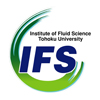
| Our Organization | |||
|
| Symposium Circular |
- Professor Susumu Shirayama (The University of Tokyo)
- Doctor Kenji Ono (RIKEN)
- Professor Shigeo Takahashi (The University of Tokyo)
- Professor Koji Koyamada (Kyoto University)
 |
Professor Susumu Shirayama The University of Tokyo |
| title: | A Method to Retrieve Grid Data in Fluid Science |
| abstract: | Development of high-performance personal computing and the spread of broadband service may mean that a huge amount of data is produced from a personal site, and useful computational data is accumulated and distributed over personal sites. Owing to the volume of data, it is quite difficult to access such data even if using modern information technology. We have developed a new knowledge-intensive simulation system to overcome this issue. In this paper, we consider the characteristic feature of grid data. And then, a new method to retrieve a grid data will be proposed. |
| biography: |
Graduated from Kyoto University [Aeronautical Engineering] in 1982. Graduated from Doctor course of Tokyo University [Aeronautics] in 1987. Degree: Doctor of Engineering [in Aeronautics]. April 1987
|
 |
Dr. Kenji Ono RIKEN |
| title: | A Seamless CFD System Coupling with The Implicit Function |
| abstract: | A novel concept of the framework for CFD system that adopts the implicit function will be presented. On the CFD system which consists of grid generation, flow simulation and visualization, the implicit function is applied for the definition of shape, the coupling with CFD algorithm, rendering in visualization process, the extraction of region of interest and so on. The geometry data expressed by the implicit function enables us to construct a seamless process of CFD. |
| biography: |
|
 |
Professor Shigeo Takahashi The University of Tokyo |
| title: | Toward Feature-Driven Approach to Perception-Based Visualization |
| abstract: | Recent developments of computational performance allow us to easily manipulate large-scale volume datasets. However, such datasets usually involve underlying complexity inherited from the high-frequency sampling, which makes it difficult for us to understand the associated inner structures directly from the visualization results with naive parameter tuning. This talk presents two possible solutions to this problem obtained in our recent studies. The first is to accentuate the meaningful features embedded in the datasets and the second solution is to generate the corresponding visualization results by taking into account the human visual cognition. For extracting the features, we track the topological transitions of isosurfaces with respect to the scalar field value. For reflecting the human visual preference on the visualization results, we formulate the optimality of the viewpoint with which the target volume can be captured. The details of these solutions will be presented together with a rich set of visualization examples in this talk. |
| biography: | Shigeo Takahashi received his B.Sc., M.Sc., and Ph.D degrees in computer science from the University of Tokyo in 1992, 1994, and 1997, respectively. He is currently an associate professor in the Graduate School of Frontier Sciences, at the University of Tokyo, Japan. His research interests include computer graphics, geometric modeling, volume visualization, and geographical information systems. He is a member of the IEEE Computer Society, ACM, Eurographics, IPSJ, IEICE, and VSJ. |
 |
Professor Koji Koyamada Kyoto University |
| title: | Techniques for Visualizing Huge and Complex Volume Datasets |
| abstract: | In this paper, we describe our visualization technologies which will cope with huge size of complex volume datasets. First, we present a novel point-based volume rendering technique based on particle generation from the density function. In our technique, we look back on the varying density emitter model, which uses more grainy particles than the splatting algorithms do and assumes that the particles are fully opaque. Thus, our technique does not require alpha blending nor visibility ordering, which is advantageous when a huge volume dataset is visualized. Second, we express a technique for locating degenerate points in the tensor volume dataset without carrying out an expensive ei-gen-decomposition. The degenerate points can be guide posts to generate particles especially when we handle diffusion tensor volume datasets. |
| biography: | Koji Koyamada received the B.S., M.S. and Ph.D. degrees in Electronics Engineering from Kyoto University, Kyoto,Japan in 1983, 1985, and 1994, respectively. He is a professor at Kyoto University. From 1985 to 1998 he was a research member in IBM Japan. From 1998 to 2001 he was an associate professor at Iwate Prefectural University. From 2001 to 2003 he was an associate professor at Kyoto University. His research interest includes scientific visualization and simulation. |
last update : May 24, 2006


